Understanding ELDs: A Comprehensive Guide to Top ELD Devices: Features, Pros, and Cons
Federal Motor Carrier Safety Administration (FMCSA) released its rules for using electronic logging devices (ELDs) in 2015. Since then, the marketplace has seen a significant boost.
Choosing the right ELD for your vehicle is crucial and not a decision to be taken lightly.
Below you will find a complete ELD buyers guide.
ELD devices are essential for understanding and reporting driving time efficiently and accurately, making them a must-have in the industry. Since the ELD mandate is in effect, it’s the fleet owners’ duty to use ELD devices. Finding the right ELD is not just a mandate but a critical factor for your business’s success.
If your ELD can’t communicate correctly with data collection devices for enforcement, your business falls behind while others move ahead. Falling behind means your competitors gain an edge, leaving you in the dust. But worry not, we’re here to guide you in finding the right ELD device for your business.
Kindly fill our free consultation form, and you will hear back from us in no time.
For each ELD device, we list the various pros and cons, helping you identify which device will serve you best. It’s not just about compliance with ELD mandate; it’s about choosing an ELD that adds value to your business.
What are ELD Devices?
An ELD is electronic hardware (ELD or E-Log) that is attached to a vehicle’s engine.
The purpose is to record driving hours regulated by a set of rules known as the hours of service in the United States.
Each state may have different requirements, but ELDs provide a universal solution to meet Department of Transportation (DOT) regulations, allowing easy enforcement of rules.
In the past, manual logs were easy to manipulate, but ELDs ensure accuracy as they record data from the vehicle’s actual run time.

According to the DOT, truckers can drive a maximum of 11 hours per day.
However, for every eight hours of driving time, there is a mandatory 30-minute break.
ELDs efficiently record this time, ensuring DOT compliance and avoiding penalties for your company.
Why ELD Regulation?
The primary reason for these regulations is to ensure safety. ELDs capture data on engine hours, date and time, vehicle miles, location information, driver identification information, authenticated user, vehicle, and motor carrier, ensuring drivers comply with DOT rules.
How Do ELD Devices Work?
There are two basic types of ELDs, and you must choose the one that best reflects your fleet’s operations.
ELDs record information hourly, but many fleet owners opt for systems that include more detailed information, enhancing efficiency and profitability.
The federal regulation provides business owners with the tools needed to make their systems far more efficient. For trucking companies, efficiency equals profitability, and that’s why trucking fleets find ELDs incredibly beneficial.
Dedicated ELD Units
Dedicated ELD units, often considered the traditional choice, primarily function to log time and miles driven. These units require a cloud backup and operate similarly to how smartphones do, utilizing a wireless network.
While these are fundamental devices, the good news is you can upgrade them and add features by using smartphones or tablets.
The pivotal aspect here is ensuring that there’s ample cloud space so that the data can be transmitted as swiftly and efficiently as needed, keeping your operations smooth and compliant.
Bring Your Own Device ELD Units
On the other hand, Bring Your Own Device (BYOD) ELD units represent a more modern approach, offering a flexibility that many fleet managers find appealing. This method allows managers and drivers to utilize their own devices, making information transmission through Bluetooth connections.
BYOD systems have notably made reporting to the DOT significantly more straightforward and time-efficient. This ensures that drivers can work with ease and efficiency, adhering to regulations without unnecessary complexity.
Understanding How to Purchase the Right ELD
For many fleet managers, the tracking of driving time is something that gets done with paper and pencil until recently. But now, due to the regulations, it is imperative to learn about the different systems available to properly equip your fleet. And this, consequently, allows them to work more efficiently.
To achieve this, several considerations must be taken into account before purchasing an ELD.
For instance, if your rig is not equipped with the dongle that allows BYOD devices to work correctly, it may be worth the cost to install these adapters to utilize these systems effectively. Also, consider your drivers – what would be more comfortable and user-friendly for them?
Below, we have several different ELDs for you to consider, each with its cost, pros, and cons, and links to learn more from the manufacturer.
Our goal is to provide you with concise yet comprehensive reviews to aid your decision-making process.
Garmin eLog ELD Device
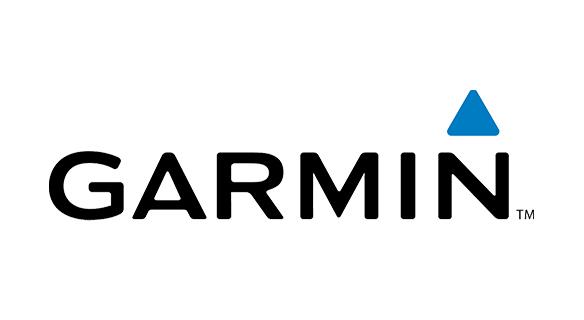
When we talk about GPS and driving assistance, few brands come to mind quickly. Garmin is one of them.
This notable brand is known for how they make getting to your destination much more comfortable than it has ever been. Thanks to their eLog, you now don’t have to worry about the tedious recording of your mileage.
Their eLog system claims to simplify the recording of your mileage and more, with minimal input required from the user, making things easier than many plug-and-play installations required on most modern electronics.
The Garmin eLog is designed to be user-friendly and is compatible with your smartphone. Once you install the system, connect your phone via USB and download the free app from Garmin, it works diligently, providing you and your drivers with the real-time data needed.
Therefore, when it comes to the FMSCA data requirements, devices like these make compliance and data logging considerably easier.
Pricing and App
The Garmin eLog system is priced at $249.99, which might seem like a hefty initial investment, but considering that many of the other components needed to use the Garmin are free, it becomes a valuable option.
For example, the Garmin eLog app for your smartphone is free. This App allows you to do everything needed for compliance.
Furthermore, the display on the app lets you know exactly how many miles you have traveled throughout the day, how many miles you have traveled during the week, and any other needed compliance statistics.
Garmin is notable because of how easy it is for fleet managers to keep track of their trucks.
Garmin, as with all their products, keeps things simple and easy by design.
What People Love About the Garmin eLog
When it comes to ease of use, the Garmin eLog is enjoyed by drivers and fleet managers. And this is because the device is easy to install and functions like a plug and play device.
Furthermore, the free Garmin eLog app and its seamless integration with the Garmin dezl make this system a favourite among many drivers. Also, the secure storage and transmission of data make it beyond easy to stay in compliance with the DOT.
The Bluetooth interface makes transmitting data incredibly easy and efficient. Therefore, you can spend more time driving and less time dealing with administrative mandates.
Finally, the lack of subscription fees means that you only need to pay the $249.99 price for this device. Thus, giving you a one-time payment per device.
What People Don’t Love About the Garmin eLog
Like anything, there are problems with the Garmin e-Log. Some users have reported issues with the device starting to track engine time when the engine is started instead of when the vehicle is moving, which can be problematic for accurate logging.
The other issue, however, is resetting it to reflect driving time versus idle time is near impossible.
Compatibility issues have also been noted, as the Garmin eLog will not fit trucks that have an OBD2 port, and there’s no adapter available for it, which can create problems if your truck is not equipped with the 6-pin or 9-pin adapters.
Finally, this ELD is a reasonably new product, it has several bugs. If you can endure several updates, then this will work for you, otherwise best to go with something more established.
Cost: $249.99
| Pros | Cons |
| – Easy to use with the free app for your smartphone – Works with most smartphones. – Bluetooth data transmission makes DOT compliance easy – Price for the device is all you will invest in this ELD – No monthly fees – Eliminates manual log keeping for HOS | – Logging issues such as adding miles when the truck is idling – Switch to drive status when moving over 5 mph – Glitches in software create freezes – Not compatible with OBD2 protocol vehicles (SAE J1979) – New product means lots of bugs – Inaccurate data (mileage or time) |
Keep Truckin ELD Device (Now Motive ELD)

An owner-operator or a fleet manager would prefer products that are designed with their business in mind.
The idea behind Motive (formerly Keep Truckin) ELD and support system is simple.
The product is designed to be used with ease.
Motive’s ELD device is not just a tool but a robust system designed to streamline operations, enhance compliance, and support drivers in their day-to-day activities on the road.
Features
Motive (formerly Keep Truckin) functionalities that fleet managers love are in its features.
You can quickly check the fuel costs in different states and also figure out exactly how much fuel is being used by drivers in idle time versus driving time.
Likewise, the diagnostics let you know in real-time if there are problems with the truck. And these features allow you to save several thousands of dollars on maintenance.
GPS tracking and log auditing also keep things more straightforward and comfortable. The system gives drivers real-time alerts if you are nearing a possible violation.
As a result, you can avoid putting your company in possible jeopardy of DOT fines and sanctions.
Cost
With all these features in place, Motive (formerly Keep Truckin) expects you to pay a premium price for premium services. And, also, the electronic logbook app is free and gives you the basic compliance features.
Therefore, if you want the ELD starter, which includes the app and the device, this costs you $240 per year.
For all the great features of Motive (formerly Keep Truckin), you would have to pay $360 per year, advertised as $30 per month.
What People Love About the Motive (formerly Keep Truckin) ELD
There is a lot to love here.
The Motive (formerly Keep Truckin) ELD allows you to have complete knowledge of everything that is going on in your vehicle.
From maintenance to driving time, this is a fully immersive system that will keep you on top of everything. It enables you to know what is going on within the interior of your engine compartment.
And this knowledge is worth thousands of dollars potentially in saved maintenance. The ease of use of this product is unrivaled.
Vehicle Data
Motive (formerly Keep Truckin) allows you to use simple swipes and taps to get to an assortment of information.
And, likewise, ensuring that you avoid a situation where you turn on the truck, and the system starts logging miles. As a result, vehicle drivers feel very much in control of the Motive (formerly Keep Truckin) system.
And ultimately, this makes them more efficient.
Reporting data, however, to DOT inspectors is easier than ever with a simple Bluetooth connection. Therefore, your drivers don’t have to be bothered by other cumbersome systems.
Instead, they have a much easier way to use the system to their advantage.
What People Don’t Love about the Motive (formerly Keep Truckin) ELD
High Cost
The Motive (formerly Keep Truckin) ELD can be a hard hit on the wallet; however, for a smaller company that doesn’t have financial flexibility. Though the app is free, all the good stuff with the ELD costs at least $240 per year.
Therefore, to get the fully immersive experience, you need to shell out $360 per year.
However, for many companies, this could be a bridge too far – even after considering possible savings.
Good for Large Fleet
The next thing, along with cost, is that Motive (formerly Keep Truckin) offers discounted monthly rates to large fleets. And, also requires smaller fleets to pay upfront.
This solution is the best product if you are looking to have a system suitable for larger fleets. However, unfortunately, due to expensive packages, it shuts out the smaller fleets that could benefit from it.
Poor Bluetooth connectivity
Finally, the Bluetooth connectivity is spotty at best.
Many drivers report having issues transmitting data via Bluetooth.
And this is a problem when you need to get to a destination but are stuck at the inspection station.
Cost
- Free for app
- $240 for app & ELD
- $360 for app, ELD, and advanced features.
| Pros | Cons |
| – A fully integrated system gives you fantastic information on your trucks automatically log their HOS into the app. – Easier reporting – The best user-friendly device on the market. – Advanced features which other BYODs lack – Does not have upfront payments | – High cost for a yearly subscription – Discounts available to big fleets but not to smaller fleets – Logs can only be edited by the dispatch. – Bluetooth connection can be spotty |
J.J. Keller ELD Devices
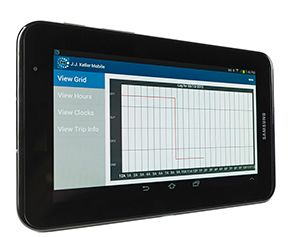
When it comes to legacy brands in the trucking industry, few brands carry the weight of J.J. Keller.
J.J. Keller invented the logbook for keeping your hours and staying in compliance. Thus, brand recognition within the industry is off the charts.
Therefore, when you are looking for a quality product in the trucking industry, J.J. Keller can’t be left out.
Trusted Brand
The good thing is: Due to trust, people are often more forgiving of legacy brands’ flaws. But, this isn’t the case if we are dealing with a brand that has less gravitas in the industry. And, this is something that works to J.J. Keller’s advantage.
That said, there is something to be said for keeping things simple and straightforward. And that’s precisely what J.J. Keller’s ELD device brings to the table.
J.J. Keller does a good job ensuring that they can serve all sorts of different types of clients.
They offer different types of connections. And regardless of your driving rig type, you can easily connect your ELD without much fuss.
Furthermore, the logging system is extremely basic and easy to use.
24/7 Driver Technical Support
There are no frills here. But it’s precisely what drivers and fleet managers need to ensure they are staying in compliance.
With 24/7 driver technical support, the company has been there for truckers.
And, further, it demonstrates yet another way to keep their promise.
Cost
The pricing is quite complicated. You can have the ELD for as little as $199.
And, depending on the different accessories, approximately $40 per month.
This pricing system may make sense for certain types of trucking companies. However, for others, the complexity is not quite what you’d expect from such an esteemed legacy brand in this industry.
What People Love About the J.J. Keller ELD
For truckers and owner-operators in the trucking industry, the J.J. Keller logbook is the standard.
Furthermore, drivers and fleet managers know they have a partner dedicated to quality. And, likewise, ensuring that each company they partnered with is well taken care of. That is the main reason why JJ Keller remains the industry leader even past the paper log era.
The 24/7 support for drivers is crucial to taking care of their clients. Therefore, J.J. Keller ensures that your drivers will never be left hanging. And will always have their questions answered.
Above all, this type of support is a significant stress reliever on the road.
Finally, the pay-as-you-go system means that if you don’t like your plan, you can change plans. Or opt for a new system entirely. And this is yet another way that J.J. Keller supports trucking companies.
What People Don’t Love About the J.J. Keller ELD devices
Unfortunately, the pricing system is, frankly, bizarre and confusing. J.J. Keller’s attempts to be a company that takes care of all different types of needs. But, it seems they miss the mark and confuse the very people they intend to help.
In the same way, hardware and usability have persistent reports of not being very reliable. And this is a big issue though the company positions itself as being attentive to the needs of drivers and fleet managers.
This is something they have to solve to remain competitive in this market.
Finally, the product itself is not very user-friendly. And, it’s not the best choice for drivers who are not very proficient with technology.
The bottom line is: For a company that is such a legacy brand, you’d expect their products to be easier to use.
Cost: $199 at most basic plan, monthly subscription plans vary and average $40 per month
| Pros | Cons |
| – A legacy brand that is the go-to for many trucking companies for decades – Seamless desktop software integration – 24/7 support means your drivers will never be left hanging – Pay-as-you-go system perfect for those not looking to commit – Automation of in-cab performance, electronic logging, and Driver-Vehicle Inspection Reports (DVIRs) with the J.J. Keller EOBRs. | – Confusing and complicated pricing – Hardware and usability is persistently dodgy – Dated management web software for fleets – Product is not very user-friendly – Limited telematics features |
My20 ELD
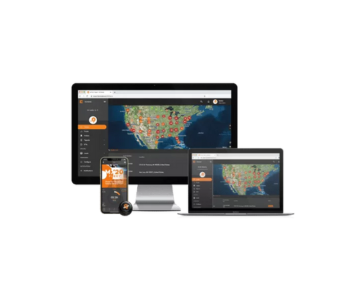
If you’re seeking solutions that will enhance your efficiency and ensure your business runs more consistently, you invariably need systems that offer the most while costing the least.
Fleet managers and drivers seek systems that provide the most value for the money, and the My20 system aims to turn this aspiration into a reality.
Low Cost
What attracts everyone to My20 is the low cost of the device and the relatively low per-month cost for subscribing to the service.
My20 is straightforward about its aim to ensure that your drivers are productive and efficient. The device tracks everything, including vehicle performance, and makes data transmission quite easy.
Furthermore, the system connects to your phone effortlessly via Bluetooth, ensuring a secure connection.
User-Friendly and 24/7 Support
When it comes to ease of use, My20 distinguishes itself from the rest. The company provides 24/7 assistance, and drivers report that the interface is straightforward to use.
The bottom line is, when using My20, you don’t have to worry about navigating through a complex app; you can just focus on driving.
Another benefit: My20 is a small device, so once it’s hooked up, you’ll forget it’s even there! Having a device that takes up so little space is something many drivers greatly appreciate.
Why People Love the My20 ELD
The simplicity of the device and the interface appeals to many drivers. There are simply no frills here, and it provides exceptional functionality.
Users really enjoy the size of the device. It doesn’t get in the way, and in the cab of a truck, where space is at a premium, it’s nice to have a device that doesn’t add to the clutter.
Finally, the interface is extremely user-friendly. Whether you are tech-savvy or a technophobe, using the My20 system will not be very difficult.
Why People Don’t Love the My20 ELD
Inexplicably, the My20 doesn’t come with an instruction manual, which is a significant issue. Perhaps the company thinks that the device doesn’t need a manual due to its simplicity, but this is a strange oversight.
There have been reports that the device has bugs when it comes to recording data from various rigs. Sometimes, it will record that a driver is on duty when the engine is idling, or vice versa. Either way, it seems a patch or some instruction should take care of this issue.
Finally, there are other issues with the firmware upgrades. Some drivers report that they have to continually upgrade the firmware, which is extremely annoying. Maybe the low cost is part of the reason why these types of bugs exist.
Cost:
- $45 for device
- $15 per month for a single driver
- $25 per month for a fleet
| Pros | Cons |
| – A simple device that’s easy to use – Small size and perfect for all cabins – User-friendly interface for users of all proficiencies – Outstanding customer service – Packed with plenty of features | – No instruction manual means that you have to learn as you go – Connection issues – Buggy performance can be frustrating for drivers – Need constantly upgrade the firmware – The app tends to change status randomly |
Linxup ELD Devices
When a company that specializes in making GPS equipment ventures into the ELD market, you can bet that they can do amazing things with their product.

In the case of Linxup, there is a lot of anticipation about how well the ELDs will perform. Their GPS systems are known to be quite reliable – something incredibly valuable in the trucking industry.
Ease of Use
The Linxup ELD is quite easy to use, like all of the best ELD systems.
Equally important, the device is plug-and-play – working with the 6-pin, 9-pin, and even the OBD2 plugs. This offers versatility when connecting, and you don’t have to purchase adapters or any other type of system.
One thing about Linxup’s ELD is that it is very utilitarian. The company isn’t looking to wow you with different features but gives you what you need at what they consider a fair price.
Dedicated Support
The key features that Linxup offers include 24/7 dedicated support, along with free online resources.
Many other companies that put out ELDs do not match Linxup in terms of what they offer.
These systems allow everyone involved in the trucking business to log their driving time and have the reports available with ease at the time of inspections.
The simplicity of this product could be its best asset and the main reason why people would choose to use it as opposed to others.
Why People Love the Linxup ELD
The simplicity of the design is a good reason why owner-operators and fleet managers prefer it.
This ELD doesn’t go out of its way with providing you tons of different gadgets. Although it does include, for an additional price, GPS and other features, it keeps everything relatively simple.
The ability to connect via the OBD2 port, 6-pin, and 9-pin ports make it a very versatile ELD device. You don’t have to start looking for different connections as they are all ready for you to use.
Thus, you have everything you need in one device– no more, no less.
This is something that many would like since having all the different bells and whistles can make things a bit intimidating.
Why People Don’t Love the Linxup ELD
There is a feeling that Linxup released an ELD just to be in the market.
Many users believe that the system has an incomplete feeling as opposed to other systems.
Also, the pricing is a bit high for a system that doesn’t deliver what other ELDs do. This is a source of frustration for fleet managers who want to get the best bang for their buck.
Finally, though they advertise excellent customer service, many people experience high call wait times and unresponsive customer care reps on the other end of the line.
Cost:
- ELD Only Plan – $29.99 per month
- ELD + GPS Plan – $39.99
- ELD + GPS + IFTA – $49.99 per month
| Pros | Cons |
| – Simple device secure for anyone to use – Comes with a dedicated data plan – Connects via all types of ports – Helps you better your CSA score fuel management capability accurate HOS logs | – Pricing is high considering it doesn’t do very much – Customer service is unresponsive, possibly due to high call volume |
There are many poorly designed devices on the market, and finding the best one may be difficult. Kindly fill out our free consultation form, and we will get in touch with you in no time.
Stoneridge ELD Devices
When you are looking to keep costs low but obtain excellent performance, there are many options in the market.
However, some options seem to work for a small niche of the market. But in the world of trucking, this can be problematic because, of course, not all trucks are created equal.
With that said, when you have an option like the Stoneridge ELD, you can have peace of mind. Your system isn’t just something that works for some truckers; it works for all.
Easy Connection
Perhaps the most comfortable part of the Stoneridge system is the secure connectivity of the system.
Since trucks have different adapters, Stoneridge makes sure that you have every adapter for every type of vehicle. And this is just the beginning of how they ensure that your ELD gives you everything that you need.
Lower Subscription
Stoneridge offers you much more. Your subscription fee includes services that are add-ons, such as IFTA reporting, etc.
While other companies may charge you close to $50 per month to add IFTA function, Stoneridge doesn’t do that; instead, you get a whole host of services for a low price.
Stoneridge also seeks to give you more for your price in terms of accessibility. It is easier to pair your device. And, unlike other services, you are allowed an unlimited amount of drivers.
They make sure to take care of you, and that’s why Stoneridge is one of the best buys in terms of ELD systems.
What People Love About the Stoneridge ELD
The “bang for your buck” factor is one of the high selling points of the Stoneridge system.
You get a whole suite of services for just $15 per month, which is uncommon in terms of affordability in the ELD industry.
Another thing that is appreciated by Stoneridge users is the ease of use of the product. This includes having different ports available regardless of what type of system your truck has: 6-pin, 9-pin, or OBD2 are all available.
Finally, the interface is so easy to use that you’ll become proficient in no time.
What People Don’t Love About the Stoneridge ELD
There are some severe Bluetooth connectivity issues, which cause problems when pairing the device and transmitting data.
Due to technical difficulties, there are logging issues with the older 6-pin connectors, making it hard to comply with the FMCSA requirements.
Software malfunctions are, unfortunately, something that tends to occur occasionally. Therefore, be ready to get updates and wait for those updates to get installed.
Cost: software subscription – /$15 per month or $150 annually (a $30 saving)
| Pros | Cons |
| – You get a ton of features for a low price – No contract and no hidden fees – Intuitive user interface – The system is incredibly easy to use – don’t need to be techy to understand it – 6-months’ data storage on the device – Plug-and-play installation | – Serious problems with Bluetooth transmission – Older connections have a hard time working with FMCSA requirements – Software tends to malfunction more often than it should – Throwing multiple QR codes at once – Unresponsive customer service |
Rand McNally TND 765 ELD Devices
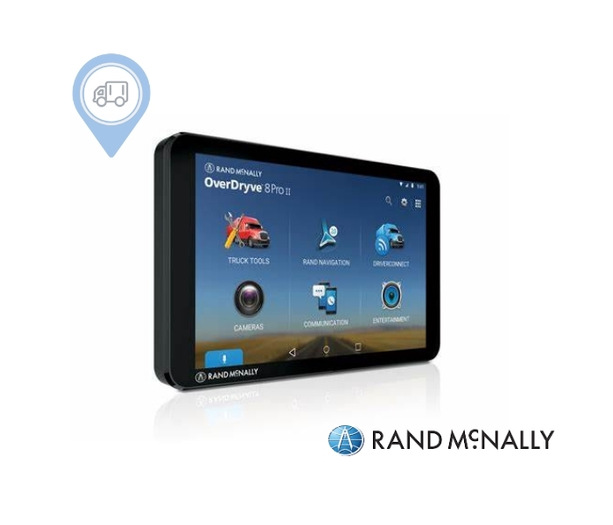
When it comes to trusting a brand, you want to trust one with a long history and a proven track record of exceptional achievement in a specific area.
In terms of maps, few companies have the legacy of Rand McNally.
You might remember walking into a store and seeing the giant Rand McNally maps of the United States. These large maps harken back to the days when navigation involved mile markers and the person sitting in the passenger seat was just as crucial to the journey as the driver.
They held the atlas and therefore knew where to go. Today, it’s different. Rand McNally has transitioned from the printed atlas business into a sector that makes sense – the ELD industry.
Overview of Rand McNally Features
Since trucking companies need the expertise that cartographers can provide, and Rand McNally understands how to calculate distance and translate it into a different format. It stands to reason that this company could produce an excellent ELD device.
The Rand McNally TND 765 is an impressive product that’s both easy to use and full of information, cutting down on a tremendous amount of time and harkening back to this company’s legacy of efficiency.
With a high-definition display, you don’t need to worry about apps for your phone. The screen does it all and even transmits data efficiently.
The best part – updates and transmissions can be done over the air, so you don’t need to worry about things like Bluetooth connectivity. Furthermore, the system itself works with the cloud very effectively.
Why People Love the Rand McNally TND 765
Easy installation is one of the main hallmarks of the system. You only need to install the app and sync the device with your phone or tablet.
Additionally, with the GPS option, you get a system that has been designed by some of America’s best cartographers.
The company understands the need to have a lot of information in a small space and knows how to get it there effectively.
Finally, Rand McNally provides updates via the over-the-air system, saving a lot of time and eliminating the need to connect with WiFi or Bluetooth.
Why People Don’t Love the Rand McNally TND 765
The cost is quite expensive initially – it’s $550 for the unit, plus a $30 monthly fee. And if you add GPS, then it can get up to $650-$700.
For small trucking companies, this can be too expensive. The interface and tablet itself seem quite outdated. It’s as if Rand McNally put all their efforts into creating an efficient product but sacrificed style at the same time. This would have been really cool 20 years ago but not today.
Finally, Rand McNally has a buggy interface, and if you reboot it, getting it back to work can be a hassle.
Cost: $550 for non-GPS unit/$650-$700 for GPS unit/$30 per month
| Pros | Cons |
| – A legacy brand that provides excellent information to the fleet manager – Easy to Install – A respected GPS device, familiar to drivers | – Feels a bit dated, not the most user-friendly – The buggy interface when rebooting, not easy to work with – Reports of software bugs and hardware problems – The touch screen can be difficult sometimes |
Kindly fill our free consultation, and we will help you to find best eld device suitable for your business needs.
Omnitracs IVG ELD Devices
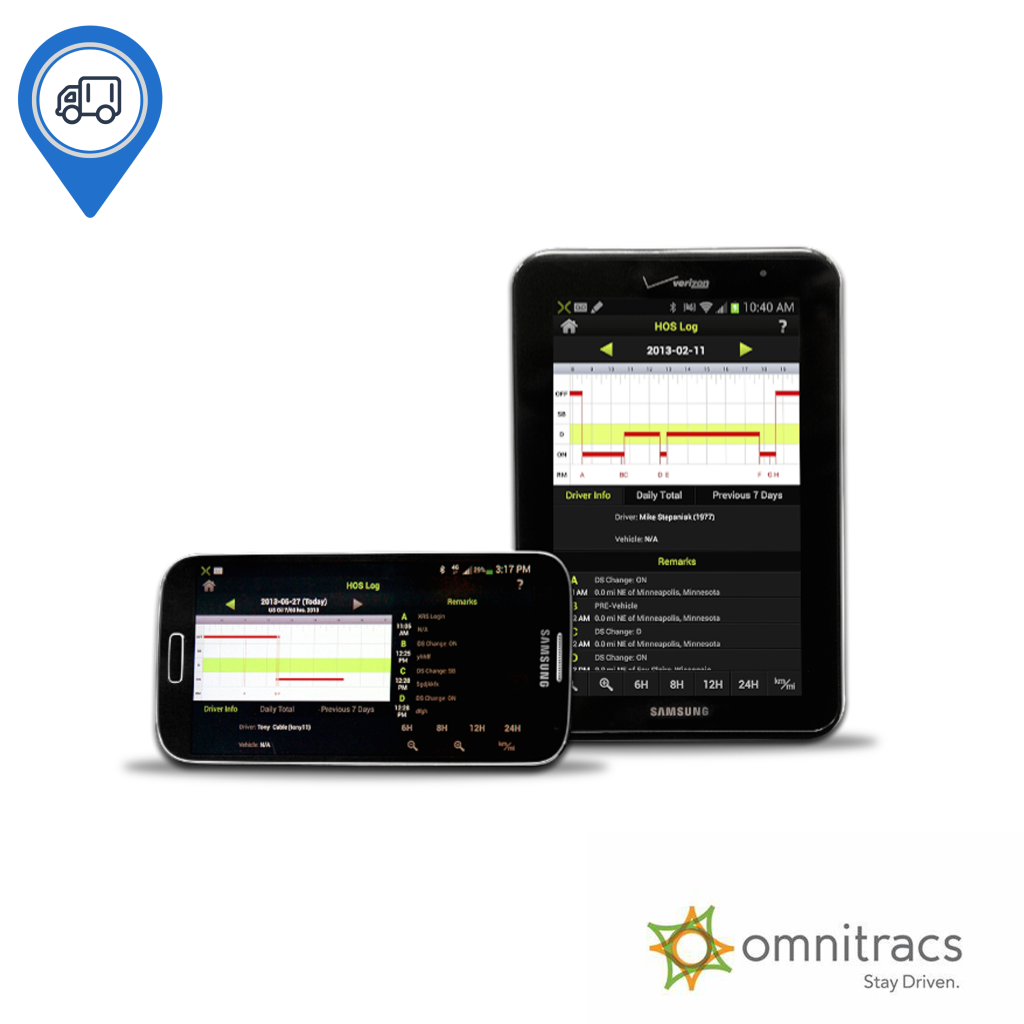
Omnitracs, often referred to as the “Intelligent Vehicle Gateway” (IVG), is not for the timid.
This product doesn’t merely log hours but also provides a portal to understanding the vehicle in ways few can.
Omnitracs makes a mark with the IVG, one of the best devices on the market, further solidifying their brand’s dominance in the ELD sector.
Features Overview
The device offers several features that drivers and fleet managers will love, providing fantastic efficiency that almost makes you forget the upfront cost.
Notable features include ease of installation, smartphone link via cable or Bluetooth, and responsive customer support, making the lives of drivers and fleet managers easier.
What People Love About Omnitracs IVG
The device excels in ease of installation, taking only a couple of minutes and operating very close to a plug-and-play system.
The cable makes it enormously easy to get the IVG up and running, and the smartphone connection is something many drivers enjoy.
Thanks to the cable connection and Bluetooth, fleet managers can monitor all the vital information provided by the ELD.
The responsiveness of the Omnitracs team is also a plus, with the company consistently rolling out upgrades to make the system more user-friendly to drivers.
What People Don’t Love About Omnitracs IVG
The most significant problem is that many people believe Omnitracs IVG is out of reach due to its expensive upfront cost of a staggering $799.
The device might be worth it, but that may be a gamble you’d like to take. Another issue is the buggy nature of the IVG.
While they do a great job rolling out updates to fix problems, it would be preferable if all the kinks were worked out ahead of time.
Lastly, while Omnitracs tries to make this device user-friendly, a tutorial would be beneficial as it is a bit complex. Many drivers don’t want to spend time learning by trial and error.
Cost: $799 upfront, and $30 per month
| Pros | Cons |
| – Incredible ease of installation – One device, one cable – Connects to smartphone easily via cable or Bluetooth voice commands and smartphone pairing – Responsive team looking to enhance the experience | – Expensive upfront cost – Buggy device – Lacks a tutorial |
EROAD Ehubo
EROAD has removed the initial barrier to market entry, meaning that your trucking business, whether large or small, can get compliant equipment to start at no cost.
Is equipment that comes with no upfront cost worth it? In the case of EROAD’s Ehubo, the answer is yes.
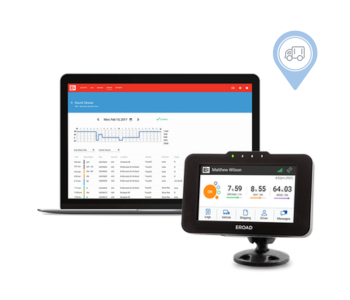
This unit is one of the most accurate on the market today, and the durability and ease of use are well-regarded by drivers and fleet managers.
If you are a fleet manager of a small trucking company, this is an excellent unit for you.
If you are part of a bigger team, then this system provides incredible value and makes your company more efficient. EROAD offers a win-win situation for companies of all sizes.
What People Love About the EROAD Ehubo
The price is by far the most significant selling point. EROAD provides real value for its price, offering functionality that is nearly unmatched in the trucking industry.
Accuracy is critical in the trucking world, and EROAD is one of the most accurate ELD providers, providing accurate data in terms of HoS and fuel, which can also be used for tracking.
What People Don’t Love About the EROAD Ehubo
Though EROAD’s unit is reliable, the business hours’ support isn’t the best.
The company has a reputation for poor customer service, meaning if an ELD device user requires help, they may have a hard time getting their question answered. Be ready to wait for a long time for someone to talk with you.
For some, the small screen can be quite discomforting, making it hard to track hours and see how much longer you can drive.
Finally, you have to sign a contract to use the device, unlike other ELD services that offer trials or pay-as-you-go options.
Cost: $0 upfront and, $35 per month
| Pros | Cons |
| – The product is extremely cost-effective – PIT Group verified as fully mandate compliant – Incredible accuracy – Durability that stands up to the rough world of trucking – Best fuel tax tracker on the market | – Poor support during business hours – Small screen |
Finally, finding the best ELD devices that suit your business needs may be time-consuming and stressful.
But, we are here to help you find the best one. Just fill our free consultation form, and we will get back to you as soon as possible.